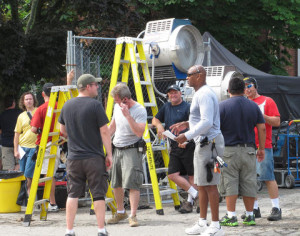Three Lessons from (and for) Agile Teams
or
“If you want to understand organizations, study something else,” Karl Weick
An agile team is one that can learn, adapt and innovate in the midst of change, using available resources.
There is compelling research to support the business case for making agility a strategic organizational priority. A study of 649 firms by MIT’s Sloan Center for Systems Research found that agile firms grow revenue 37% faster and generated up to 30% more earnings per share (Business agility and IT portfolios, 2006). The reasons for increasing agility are clear, but most leaders are less clear on how to enhance agility in their own organizations.
Lessons learned from successful agile teams in high stress, high risk circumstances, such as SWAT teams, film crews (Bechky & Okhuysen, 2011) and fire fighters (Weick, 1993) show us that agile groups and organizations have both the required competence and capacity for:
Continuous Learning
The ability to quickly become aware of, assess (and often re-assess) new information in real time and regroup (including the capacity to drop prior plans, agendas and preconceptions as they become obsolete) and respond to the situation at hand is essential to agile teams.
Fluid Communication
Agile organization s have open channels of communication across job functions and levels of authority. Critical new information can emerge at any level of the system at any time and those who receive or perceive the data must be have the confidence and competence to share it with the appropriate stakeholder.
s have open channels of communication across job functions and levels of authority. Critical new information can emerge at any level of the system at any time and those who receive or perceive the data must be have the confidence and competence to share it with the appropriate stakeholder.
Context
I have written extensively about the value of playspace (2010) in creating space for innovating, learning and changing. Playspace is the serious business of creating the context where people are free to play with new ideas, play new roles, create more play in the system and engage in improvised play to be effective in any situation. This is not the funny hats and games type of playspace; it is about creating a context where people do not feel constrained to respond in the moment to an urgent customer or business need because it is not in their job description.
Agile organizations require leaders who understand that agility is a key competitive advantage and who align their learning, development and business practices to develop and sustain. Lessons from high-risk teams can inspire us to action. Sometimes it is helpful to raise the stakes by conducting a thought experiment and ask ourselves, “What if our lives depended on our organization’s ability to be agile?” When we raise the stakes, we often discover capacities we didn’t know we had.
Bechky, B. A., & Okhuysen, G. (2011). Expecting the unexpected? How SWAT officers and film crews handle surprises. Academy of Management Journal, 54(2), 239-261.
Business agility and IT portfolios. (2006). Cambridge, MA: MIT Sloan School of Management, Sloan Center for Systems Research.
Meyer, P. (2010). From workplace to playspace: Innovating, learning and changing through dynamic engagement. San Francisco: Jossey-Bass.
Weick, K. E. (1993). The collapse of sensemaking: The Mann Gulch disaster. Administrative Science Quarterly, 38(4), 628-652.
This post by Pamela Meyer originally appeared on meyercreativity.com/blog


Pingback: #MondayMotivation - Keeping Your Team Agile in the Fourth Quarter -